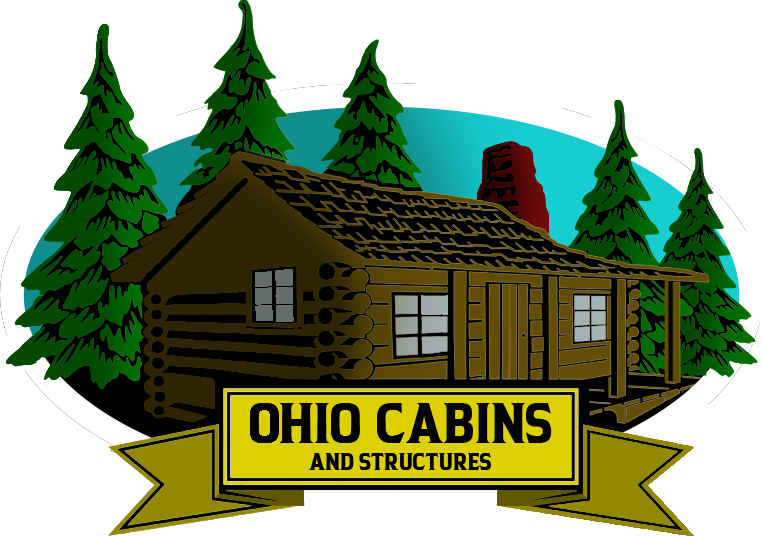Tiny homes offer a unique alternative to traditional housing, combining efficiency, sustainability, and a simplified lifestyle. As their popularity grows, many individuals and families are exploring where they can best place their tiny homes to maximize their benefits. You might be wondering where can I put a tiny home. Whether you’re considering a tiny home for full-time living, a vacation getaway, or a guest house, understanding your placement options is crucial for making the most of your tiny home experience. At Ohio Cabins & Structures, we specialize in helping you find the perfect location for your tiny home, ensuring that you enjoy both comfort and convenience.
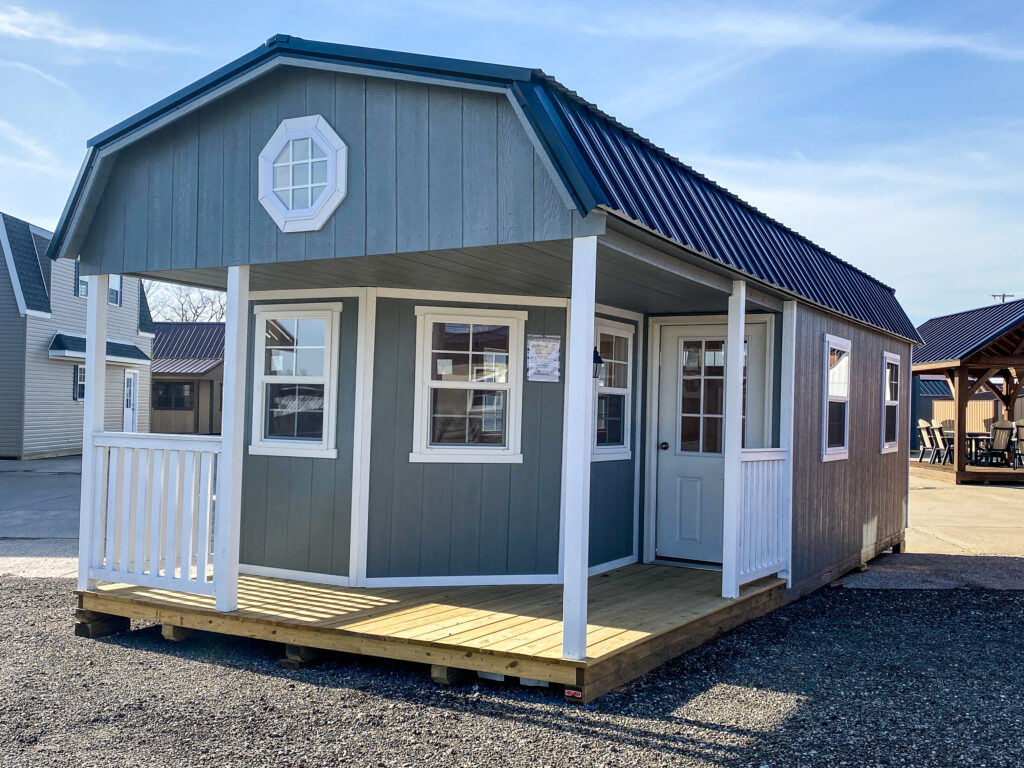
1. On Your Own Property
One of the most straightforward options for placing a tiny home is on your own property. Whether you own a large plot of land or a smaller residential lot, adding a tiny home can be a great way to increase living space, provide rental income, or create a personal retreat. Here are some key considerations for placing a tiny home on your property:
a. Zoning and Building Codes
Before placing a tiny home on your property, it’s essential to check local zoning laws and building codes. Some municipalities have specific regulations regarding the minimum size of homes, placement requirements, and land use. Ensure that your tiny home complies with these regulations to avoid potential legal issues. Ohio Cabins & Structures can assist you in navigating local codes and ensuring that your tiny home meets all necessary requirements.
b. Utilities and Infrastructure
Consider the availability of essential utilities such as water, electricity, and sewage. If you plan to place your tiny home on a site that is not already equipped with these services, you may need to arrange for connections or alternative solutions. Options include installing a septic system, using a well for water, or incorporating off-grid systems like solar panels. Our team can provide guidance on how to set up utilities and infrastructure for your tiny home.
c. Site Preparation
Proper site preparation is crucial for placing a tiny home on your property. This includes leveling the ground, creating a stable foundation, and ensuring proper drainage. Depending on the size and type of tiny home, you may need to prepare a gravel pad, concrete slab, or a simple wooden deck. Ohio Cabins & Structures offers advice on site preparation and can recommend local contractors for any necessary work.
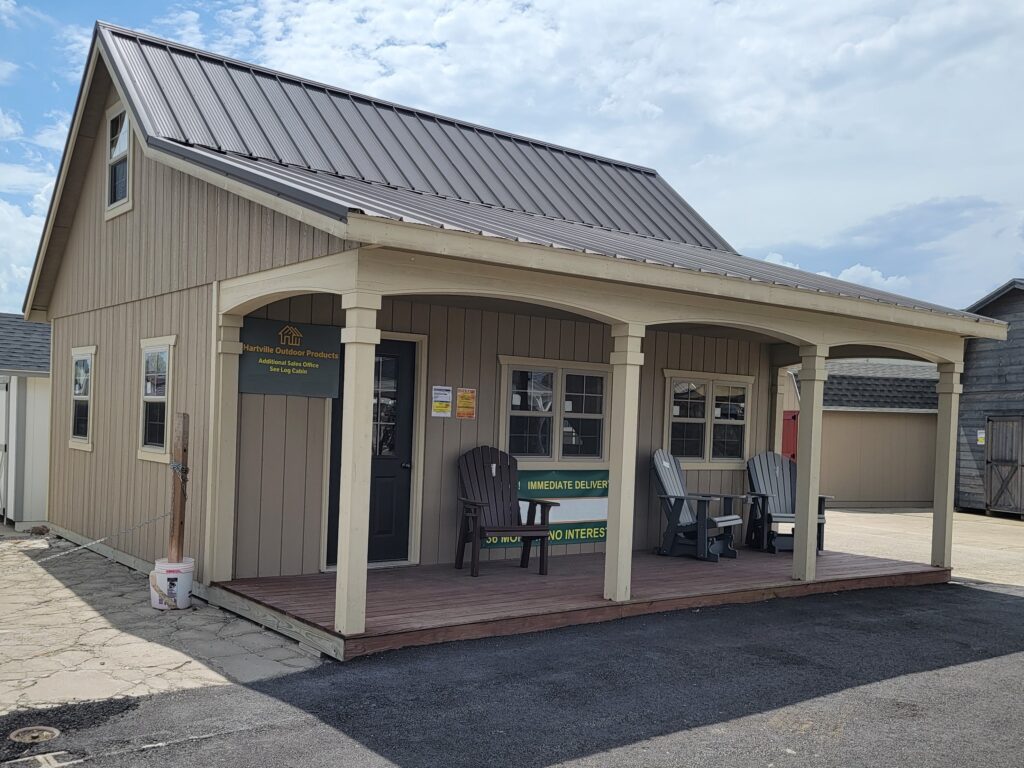
2. Tiny Home Communities
Tiny home communities have become increasingly popular, offering a supportive and like-minded community for tiny home enthusiasts. These communities provide a range of amenities and social opportunities, making them an appealing choice for many individuals and families. Here’s what to consider if you’re interested in placing your tiny home in a community setting:
a. Community Amenities
Many tiny home communities offer shared amenities such as communal gardens, recreational areas, and event spaces. These features can enhance your living experience and provide opportunities to socialize with neighbors. Research different communities to find one that aligns with your lifestyle preferences and offers the amenities that matter most to you.
b. Rules and Regulations
Each tiny home community has its own set of rules and regulations, including guidelines for home design, placement, and maintenance. Make sure to review these rules carefully to ensure that your tiny home complies with community standards. Ohio Cabins & Structures can help you understand the requirements and make any necessary adjustments to your tiny home to fit the community’s guidelines.
c. Cost and Fees
Tiny home communities may have associated costs, such as rental fees, association dues, or utility charges. It’s important to understand these costs and factor them into your budget when considering a community setting. Additionally, inquire about any additional fees for amenities or services offered by the community.
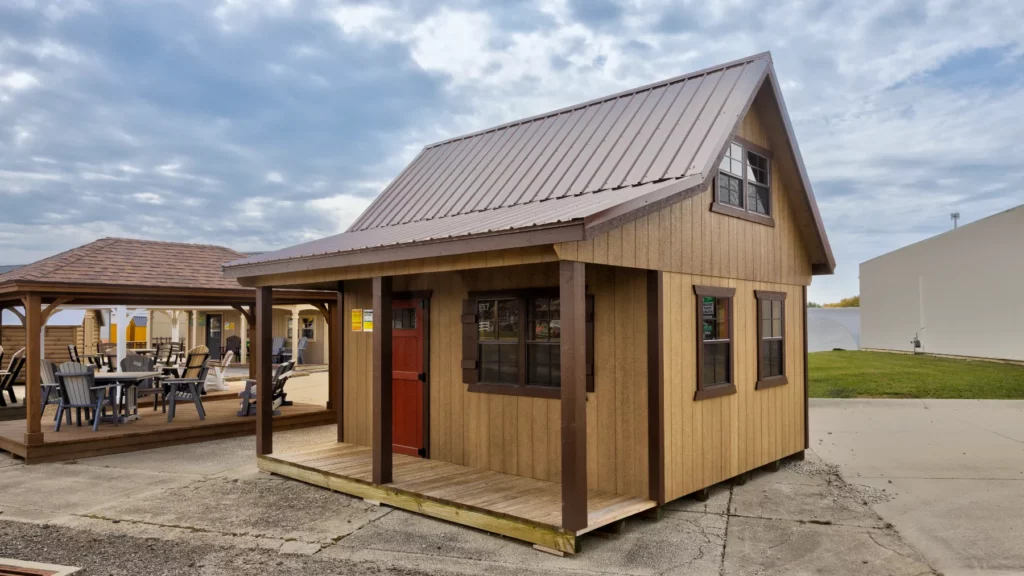
3. Vacation or Recreational Properties
Tiny homes are an excellent option for vacation or recreational properties, providing a cozy and functional space for seasonal use. Whether you have a cabin in the woods, a lakeside retreat, or a beachside property, a tiny home can serve as a charming and efficient addition. Consider the following factors when placing a tiny home on a vacation or recreational property:
a. Seasonal Use and Maintenance
If you plan to use your tiny home seasonally, consider how it will be maintained during periods of inactivity. Ensure that the home is properly winterized or protected from the elements to prevent damage. Ohio Cabins & Structures can provide tips on seasonal maintenance and help you prepare your tiny home for year-round use.
b. Access and Accessibility
Think about how easily you can access your tiny home on a vacation property. Ensure that the site is reachable by vehicle and that there are adequate pathways or driveways for easy access. Consider any additional features you might need, such as a ramp for accessibility or a secure parking area.
c. Local Regulations
Even on vacation or recreational properties, local regulations and zoning laws still apply. Check with local authorities to ensure that you comply with any restrictions related to tiny homes on recreational land. Ohio Cabins & Structures can assist you in understanding and meeting these regulations.
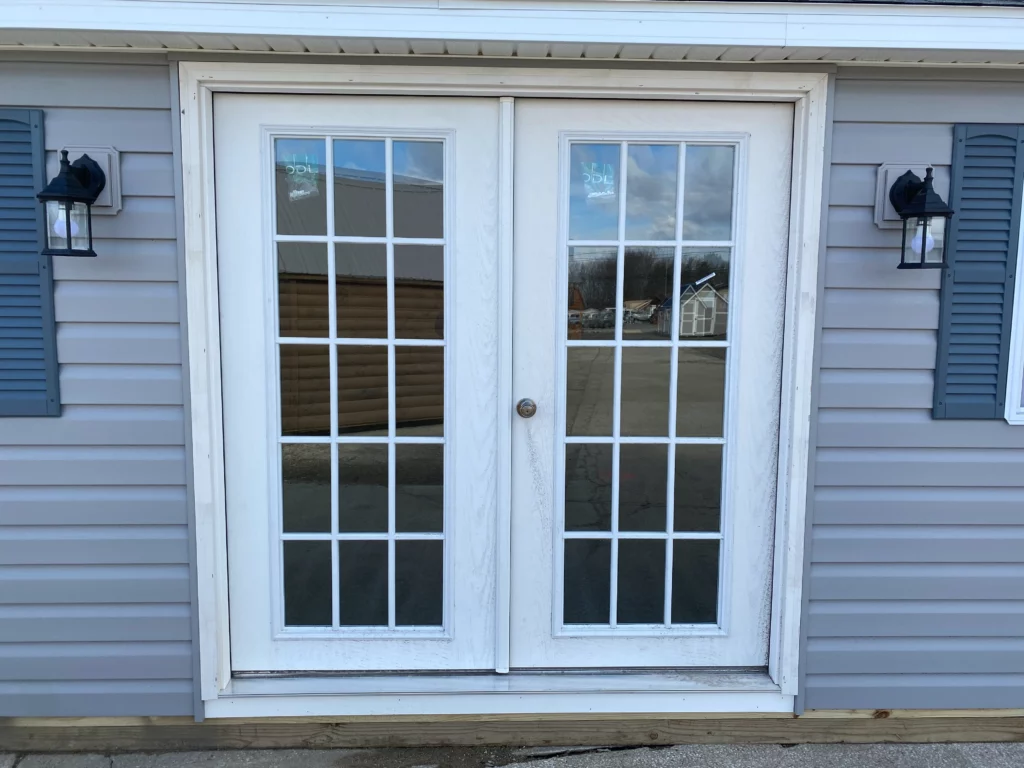
4. On Wheels: Mobile Tiny Homes
Tiny homes on wheels offer the ultimate flexibility and mobility, allowing you to take your home with you wherever you go. These homes are built on trailers and can be towed to different locations, making them ideal for those who enjoy traveling or living a nomadic lifestyle. Here are some considerations for placing a tiny home on wheels:
a. Legal and Safety Requirements
Tiny homes on wheels must comply with legal and safety requirements for road use. This includes adhering to size and weight limits, ensuring proper trailer maintenance, and obtaining any necessary permits for towing. Ohio Cabins & Structures can provide guidance on meeting these requirements and ensuring that your tiny home is roadworthy.
b. Temporary vs. Permanent Placement
While tiny homes on wheels offer mobility, you may choose to park your home in a permanent or semi-permanent location for extended periods. If you plan to place your tiny home in one spot for a long time, consider how to secure it properly and ensure that it remains level and stable.
c. Accessibility and Services
When parking a tiny home on wheels, ensure that you have access to essential services such as water, electricity, and waste disposal. Some mobile tiny home owners use off-grid systems or portable solutions, while others may seek out locations with available hookups and amenities.
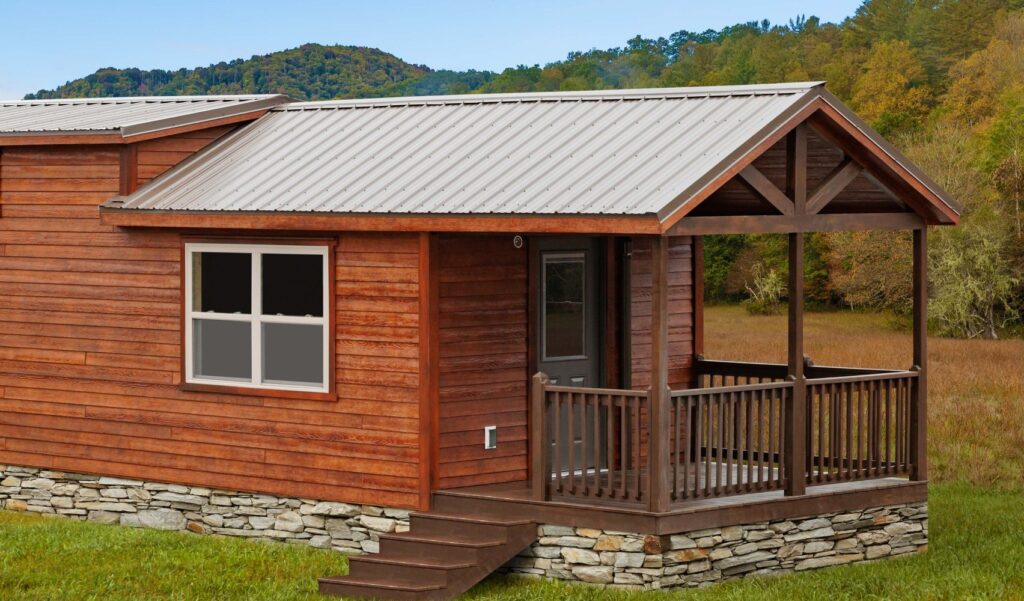
5. Alternative Locations: Tiny Homes on Agricultural Land
Another option for placing a tiny home is on agricultural or rural land, where the focus is on a more sustainable and self-sufficient lifestyle. Tiny homes can complement farming, gardening, or other agricultural activities, providing a comfortable living space while supporting a self-reliant way of life. Consider the following factors for placing a tiny home on agricultural land:
a. Land Use and Zoning
Agricultural land may have specific zoning regulations and land use restrictions. Ensure that placing a tiny home on the land complies with these regulations and does not interfere with farming or agricultural activities. Ohio Cabins & Structures can help you navigate local zoning laws and ensure that your tiny home placement is legally compliant.
b. Self-Sufficiency and Sustainability
Tiny homes on agricultural land often benefit from a focus on self-sufficiency. Consider incorporating sustainable features such as solar panels, rainwater collection systems, and composting toilets to reduce reliance on external resources. Ohio Cabins & Structures can provide advice on integrating these features into your tiny home design.
c. Access to Resources
Ensure that you have access to essential resources such as water, fuel, and waste disposal. Depending on the location, you may need to arrange for these resources or develop alternative solutions to support your tiny home lifestyle.
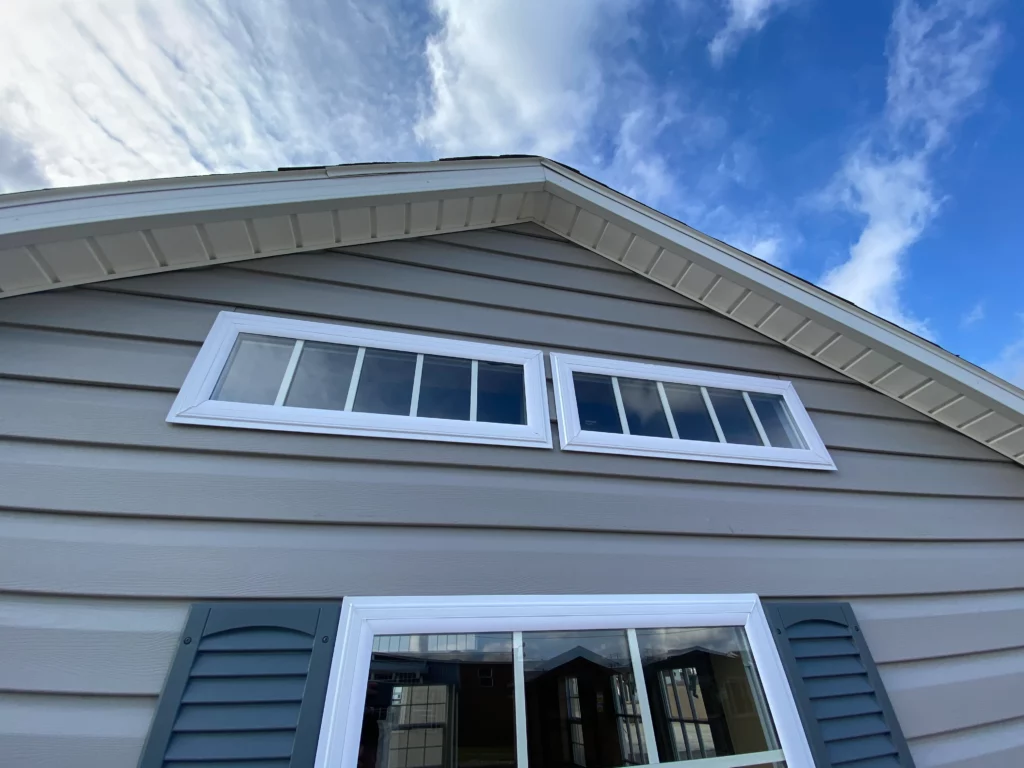
Conclusion
Choosing the right location for your tiny home is essential for maximizing its benefits and ensuring a comfortable and functional living experience. Whether you’re placing your tiny home on your own property, in a tiny home community, on a vacation property, or on wheels, careful consideration of zoning regulations, utilities, and accessibility will help you make the most of your investment. At Ohio Cabins & Structures, we are dedicated to helping you find the perfect placement for your tiny home and providing expert guidance throughout the process. With our support, you can enjoy the benefits of tiny living and create a space that suits your unique lifestyle and preferences.
